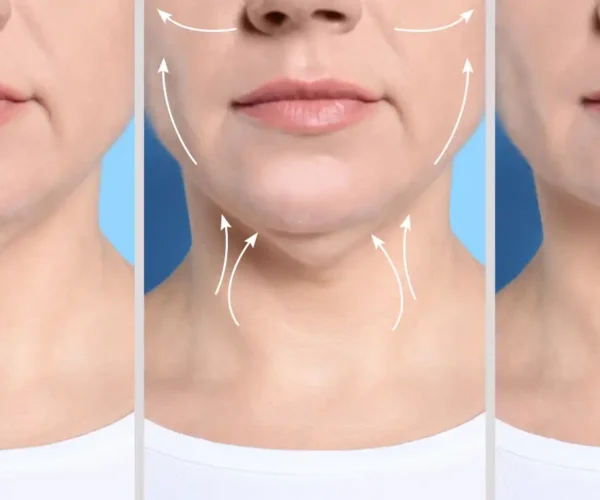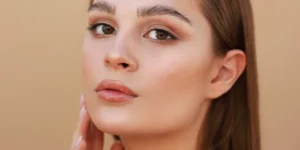Jowls — the sagging skin along the jawline — are a common cosmetic concern. Understanding the interplay of aging and jowls, genetic causes of jowls, and lifestyle factors for jowls helps you choose prevention strategies and the most effective treatments. This article explains what causes jowls, how genetics and lifestyle influence jowl development, and practical ways to slow or treat jowling.
What are jowls?
Jowls are the loose or sagging skin and soft tissue that appears along the lower cheeks and jawline. Jowls usually form as facial fat shifts, skin elasticity declines, and structural support under the skin weakens. Understanding jowl development causes starts with appreciating how the face changes with time and the role of genetics and daily habits.
How does aging cause jowls?
Aging is the primary driver of jowl formation. Over time, collagen and elastin production falls, skin thins, and bone resorption alters facial contours — all of which make the jawline less defined. In short: aging and jowls are tightly linked because natural tissue loss and gravity expose and accelerate jowl development. Many reputable medical sources explain that wrinkles, sagging, and loss of elasticity from aging are key contributors to jowls. :contentReference[oaicite:0]{index=0}
How aging changes facial structure
With age, fat pads shift downward, muscle tone decreases, and the jawbone can recede slightly. These anatomical changes change the support under the skin and create the familiar softening of the jawline — one of the main jowl development causes.
Are jowls genetic?
Yes — genetics play an important role. Family traits determine skin thickness, collagen quality, facial bone structure, and how fat redistributes with time. If your parents developed early jowling, genetics may predispose you to jowls as well. In other words, genetic causes of jowls are real and explain why some people show jowls earlier despite similar lifestyles.
Inherited risk vs. personal habits
Even with genetic predisposition, lifestyle can accelerate or slow jowl formation. So while genetic causes of jowls set a baseline risk, the timing and severity of jowls are often influenced by modifiable factors.
Can lifestyle habits affect jowls?
Absolutely. Several lifestyle habits influence how quickly jowls appear. Smoking, repeated sun exposure (UV damage), rapid weight loss, poor nutrition, and certain sleep positions can worsen laxity and speed up jowl formation. That means lifestyle factors for jowls are actionable: changing these habits can slow progression of jowls. :contentReference[oaicite:1]{index=1}
Top lifestyle contributors
- Sun exposure — breaks down collagen and elastin.
- Smoking — increases oxidative stress and accelerates aging.
- Rapid weight loss or large weight fluctuations — reduce facial fat support.
- Poor skincare or lack of collagen-boosting care — weakens skin resilience.
What factors speed up jowl development?
Many factors can speed jowl formation. The most common include intrinsic aging, family history, repeated UV exposure, tobacco use, rapid weight changes, and hormonal changes (e.g., menopause-related collagen loss). These combined influences explain why some people notice early jowls while others keep a defined jawline longer. When considering jowl development causes, it’s helpful to separate unavoidable factors (aging, genetics) from modifiable ones (sun exposure, smoking, diet).
Hormones and menopause
Menopause accelerates collagen loss in many women, which can make jowls more noticeable in the years immediately following menopause. This is one of the biological reasons aging and jowls often appear suddenly during midlife. :contentReference[oaicite:2]{index=2}
Prevention tips to slow jowl formation
Focus on habits that preserve collagen, protect skin, and support facial structure. Key steps include:
Daily sun protection
Use broad-spectrum sunscreen every day to protect collagen and reduce UV-driven sagging.
Quit smoking
Smoking accelerates skin aging and increases risk of early jowling.
Maintain stable, healthy weight
Avoid rapid weight loss or yo-yo dieting that can leave excess loose skin along the jawline.
Skincare and topical support
Products with retinoids, peptides, and hyaluronic acid can support firmness and hydration — helpful for anyone concerned about aging and jowls.
Treatment options: non-surgical and surgical
Treatment depends on jowl severity and patient goals. Non-surgical options include energy-based devices (ultrasound, radiofrequency), dermal fillers to restore support, and thread lifts for temporary mechanical lift. For more advanced jowls, surgical facelift procedures remain the most durable solution. Clinical resources summarize these approaches and stress that individualized assessment yields the best results. :contentReference[oaicite:3]{index=3}
Minimally invasive treatments
Examples: RF skin tightening, ultrasound (HIFU), PDO threads, and volumizing fillers. Many patients combine treatments to address both laxity and volume loss — addressing several jowl development causes at once.
Surgical options
When tissue laxity is significant, a lower facelift (or neck/face lift) repositions deeper tissues and removes excess skin — the most definitive approach for advanced jowls.
When to see a specialist (and how Parpar can help)
If jowls are bothering you or steadily worsening, consult an aesthetic specialist to evaluate causes (age, genetics, lifestyle) and recommend a tailored plan. Parpar offers professional jowls assessment and advanced treatment options to address laxity and restore jawline definition. Learn more about our service here: Parpar — Jowls Treatment.
FAQ — Quick answers to your keyword questions
How does aging cause jowls?
Aging causes collagen and elastin loss, fat redistribution, and bone changes — all of which reduce facial support and promote jowling. This simple link between aging and jowls is why jowls are common with age. :contentReference[oaicite:4]{index=4}
Are jowls genetic?
Yes. Genetic causes of jowls influence skin elasticity, facial structure, and the timing of jowl formation — meaning family history matters.
Can lifestyle habits affect jowls?
Yes. Smoking, sun exposure, rapid weight loss, and poor skincare are all lifestyle factors for jowls that can accelerate jowl formation.
What factors speed up jowl development?
Major accelerants include UV damage, smoking, hormonal changes, large weight fluctuations, and genetic predisposition — these are common jowl development causes.
Summary — What to remember
Jowls form because of an overlap between aging and jowls, genetic causes of jowls, and lifestyle factors for jowls. While you can’t change genetics or stop time, protecting skin, maintaining healthy habits, and choosing the right cosmetic treatments can slow and improve jowl appearance. If you want a personalized plan, Parpar’s jowls treatment page explains our approach and options. Explore Parpar jowls treatments.
Sources & further reading
Reliable references used in this article:
- Mayo Clinic — Wrinkles and aging skin overview. :contentReference[oaicite:5]{index=5}
- American Academy of Dermatology — Firming sagging skin and treatment options. :contentReference[oaicite:6]{index=6}
- Healthline — Jowls: causes, prevention and treatment. :contentReference[oaicite:7]{index=7}

